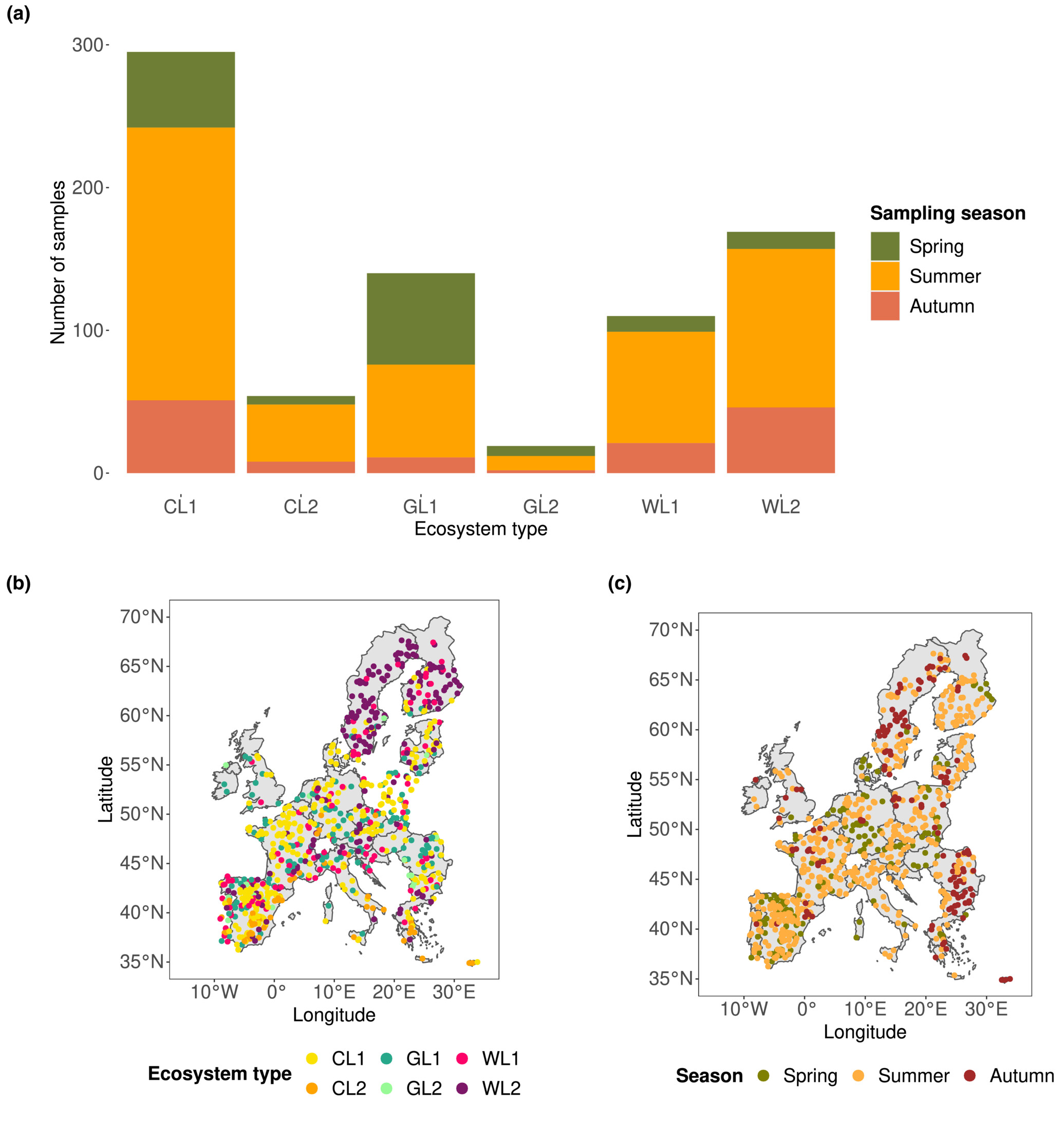Köninger, J., Ballabio, C., Panagos, P., Jones, A., Schmid, M.W., Orgiazzi, A., Briones, M.J.I., 2023. Ecosystem type drives soil eukaryotic diversity and composition in Europe. Global Change Biology gcb.16871. https://doi.org/10.1111/gcb.16871
Soil eukaryotes play a crucial role in maintaining ecosystem functions and services, yet the factors driving their diversity and distribution remain poorly understood. While many studies focus on some eukaryotic groups (mostly fungi), they are limited in their spatial scale. Here, we analyzed an unprecedented amount of observational data of soil eukaryomes at continental scale (787 sites across Europe) to gain further insights into the impact of a wide range of environmental conditions (climatic and edaphic) on their community composition and structure. We found that the diversity of fungi, protists, rotifers, tardigrades, nematodes, arthropods, and annelids was predominantly shaped by ecosystem type (annual and permanent croplands, managed and unmanaged grasslands, coniferous and broadleaved woodlands), and higher diversity of fungi, protists, nematodes, arthropods, and annelids was observed in croplands than in less intensively managed systems, such as coniferous and broadleaved woodlands. Also in croplands, we found more specialized eukaryotes, while the composition between croplands was more homogeneous compared to the composition of other ecosystems. The observed high proportion of overlapping taxa between ecosystems also indicates that DNA has accumulated from previous land uses, hence mimicking the land transformations occurring in Europe in the last decades. This strong ecosystem-type influence was linked to soil properties, and particularly, soil pH was driving the richness of fungi, rotifers, and annelids, while plant-available phosphorus drove the richness of protists, tardigrades, and nematodes. Furthermore, the soil organic carbon to total nitrogen ratio crucially explained the richness of fungi, protists, nematodes, and arthropods, possibly linked to decades of agricultural inputs. Our results highlighted the importance of long-term environmental variables rather than variables measured at the time of the sampling in shaping soil eukaryotic communities, which reinforces the need to include those variables in addition to ecosystem type in future monitoring programs and conservation efforts.

Comments
comments powered by Disqus